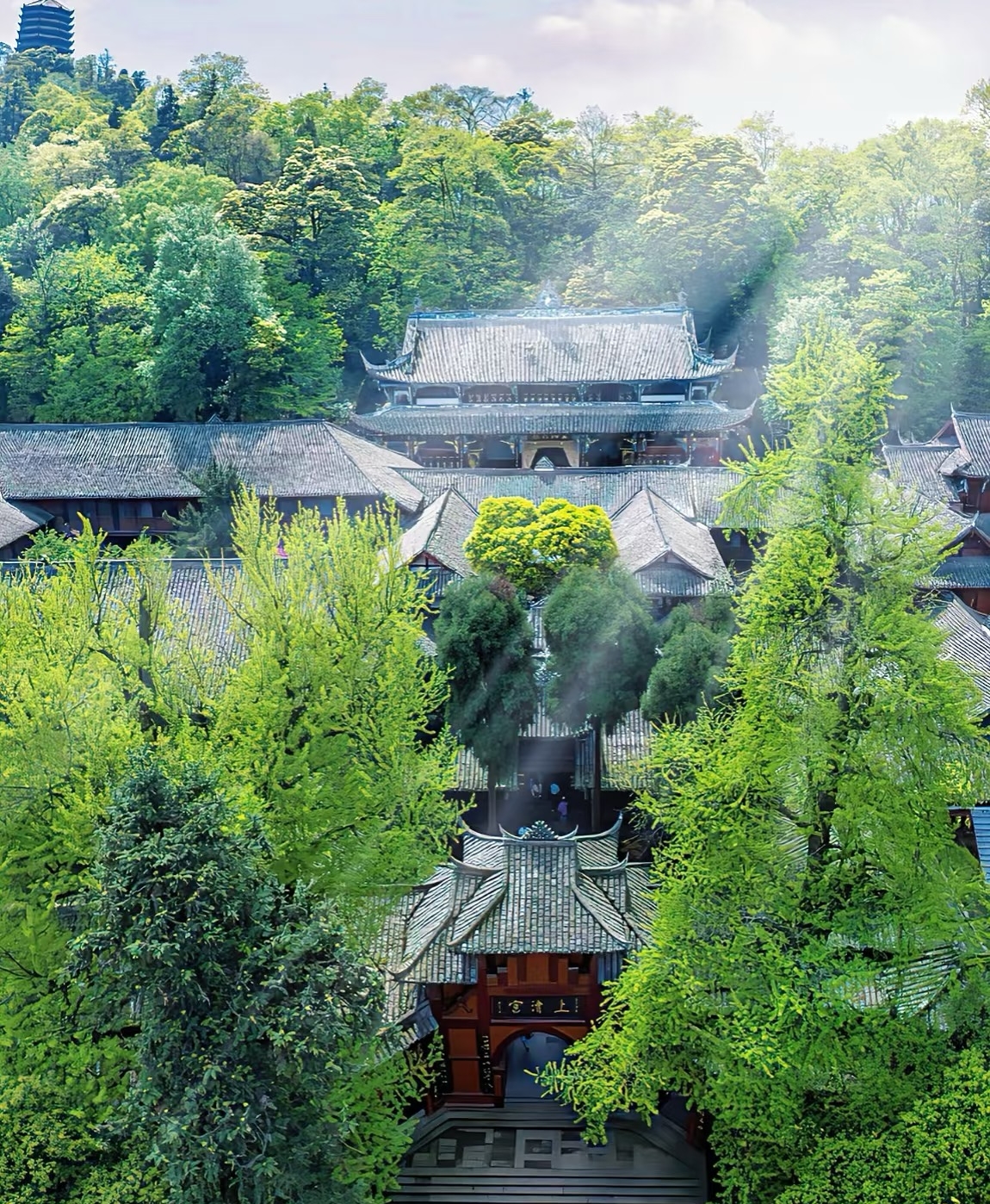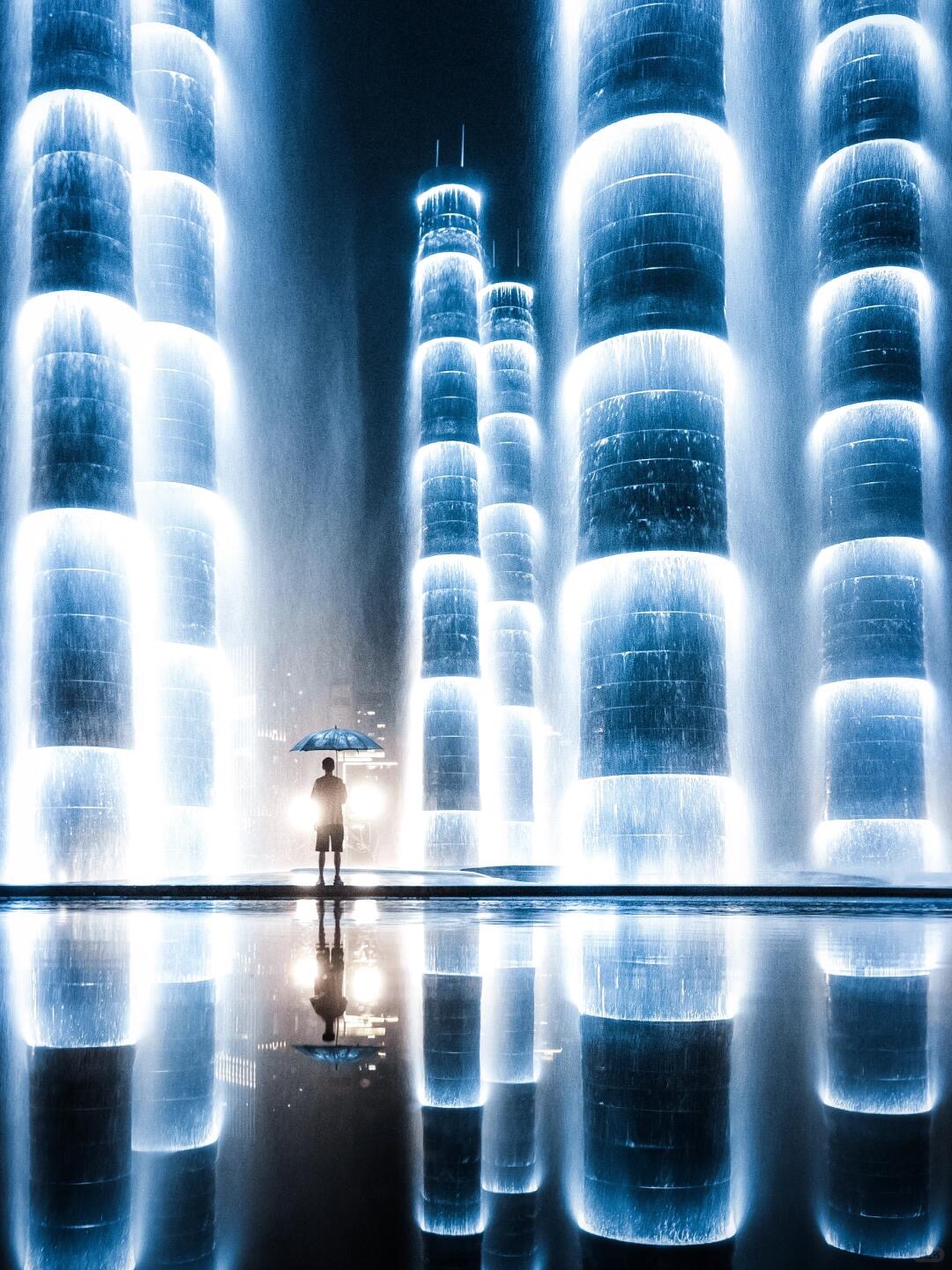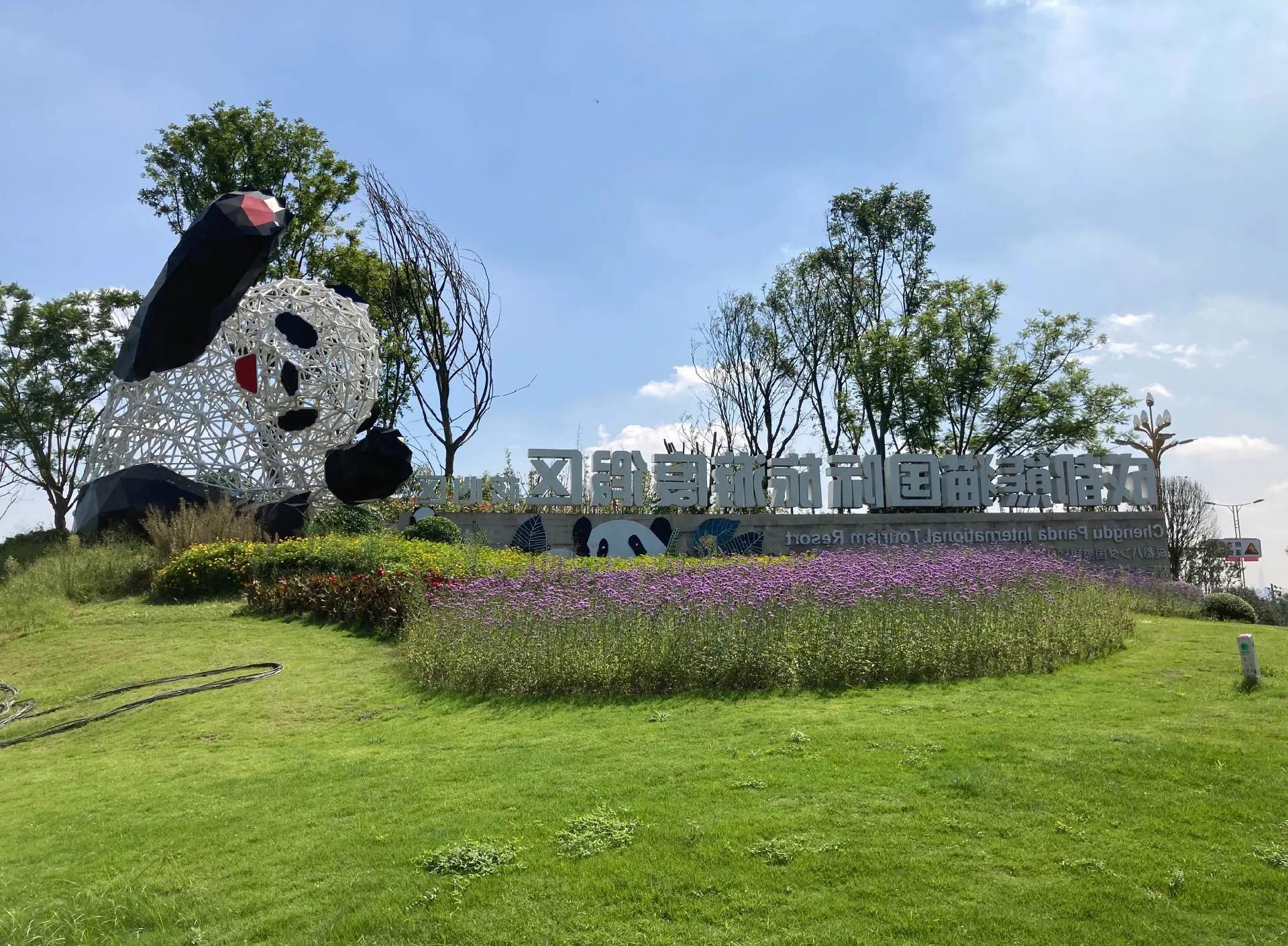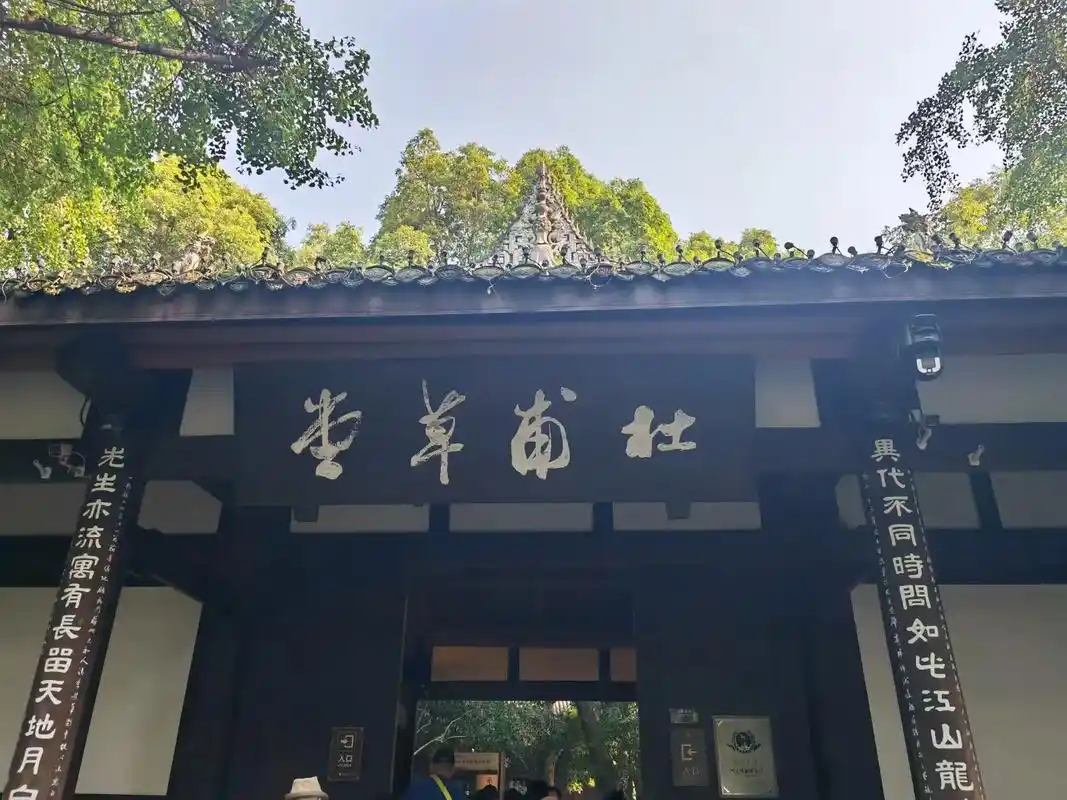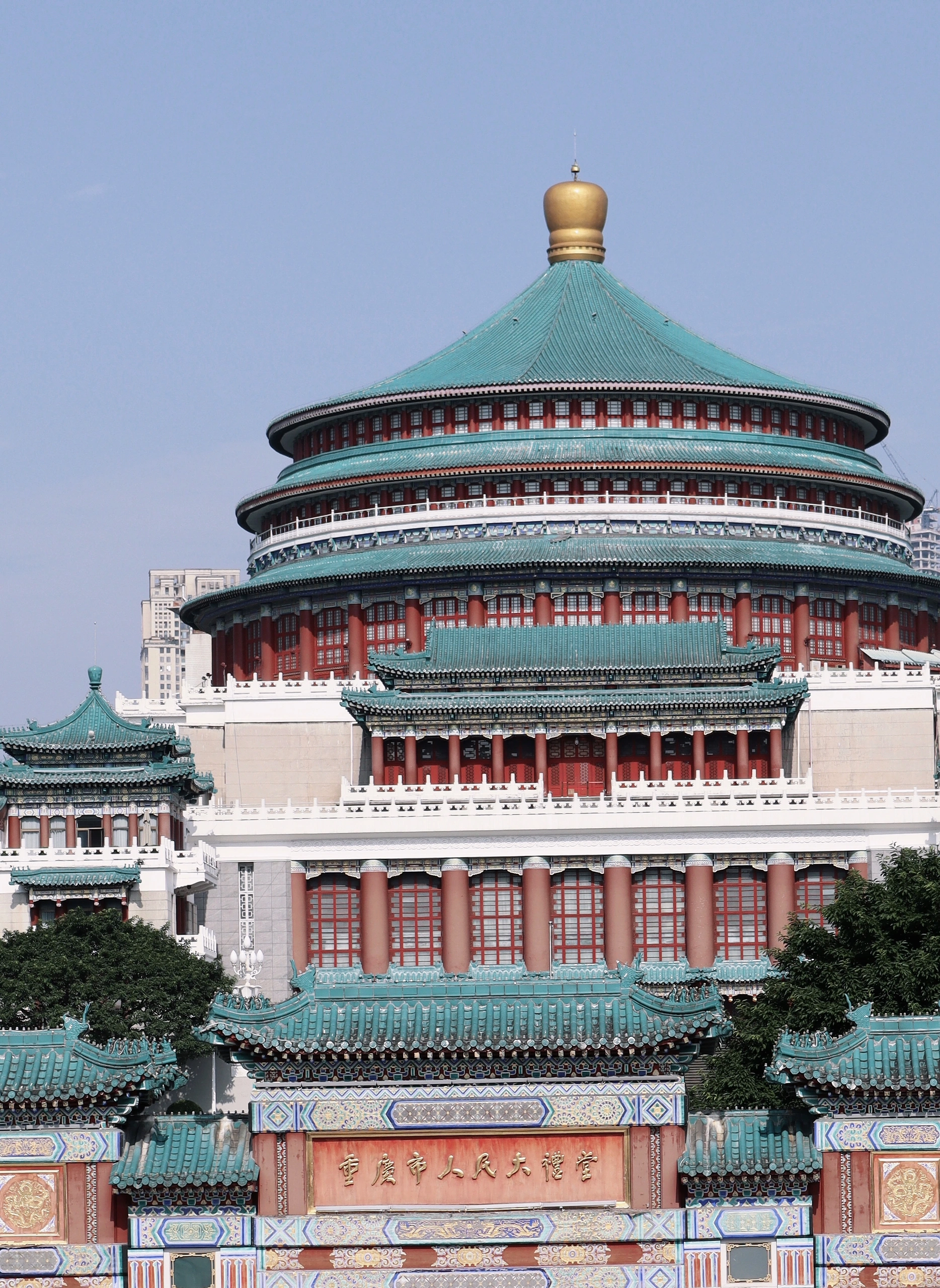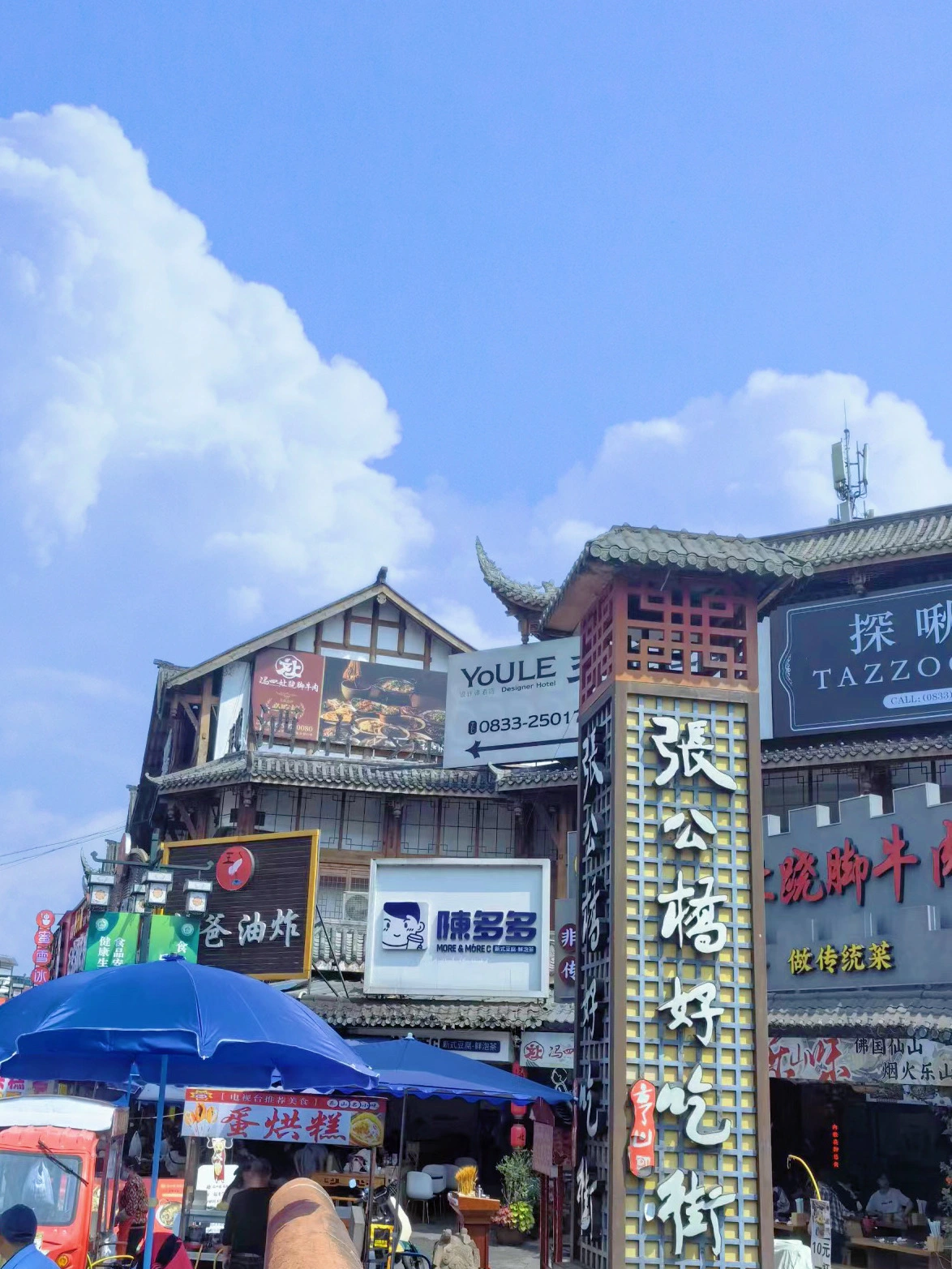

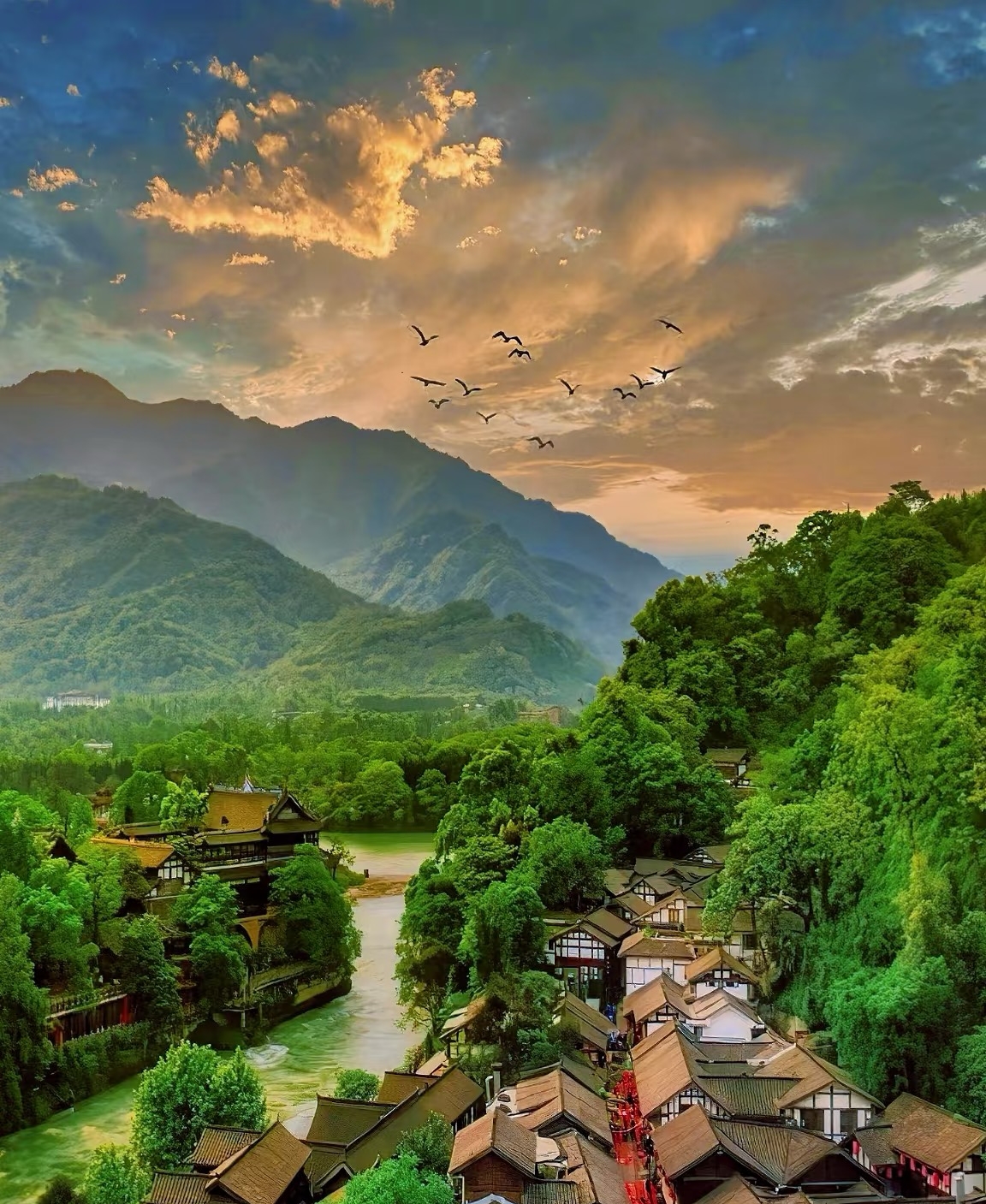
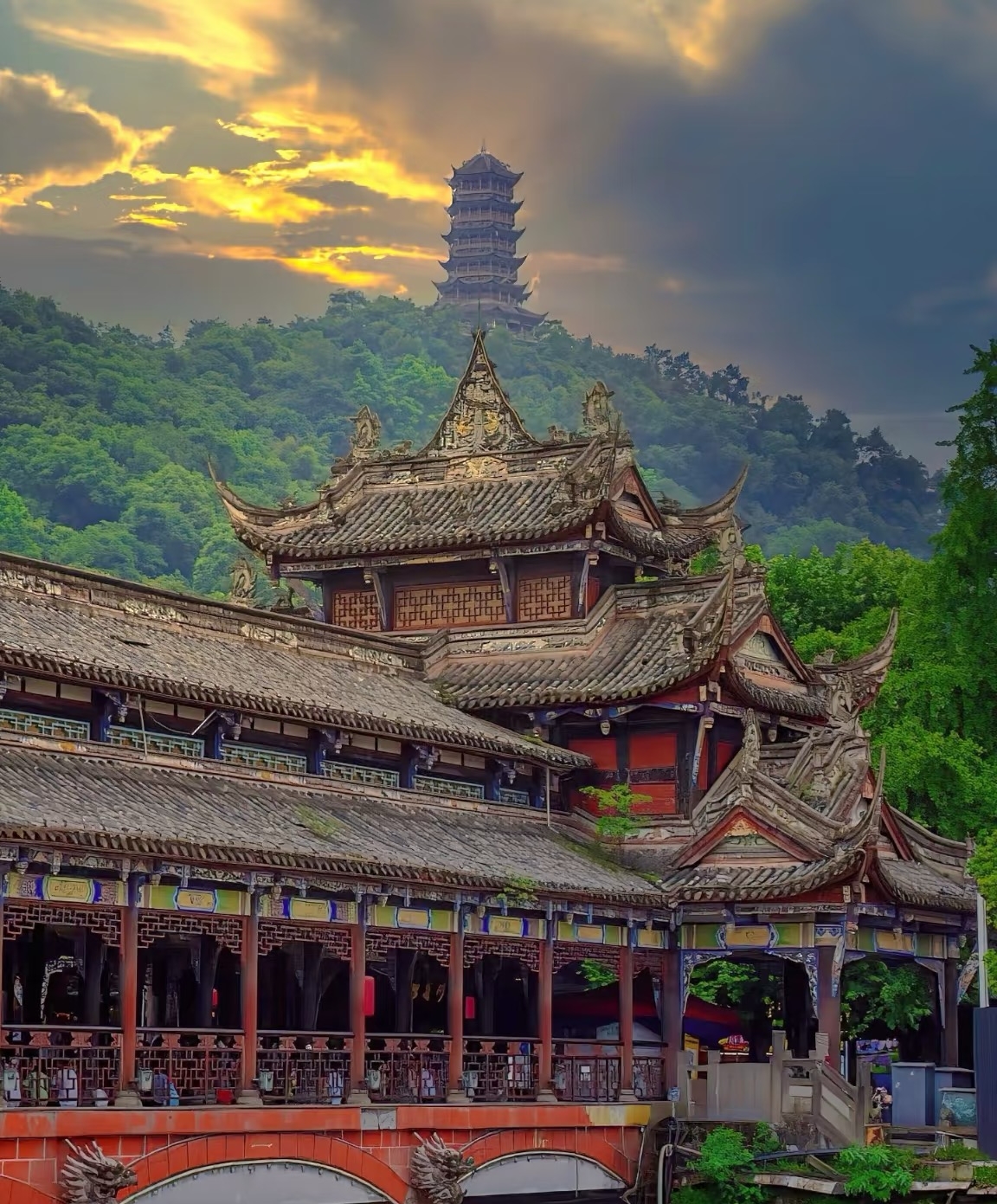
Mount Qingcheng
Mount Qingcheng, located in Chengdu, Sichuan Province, China, is one of the four sacred Taoist mountains in the country. It is renowned for its serene natural scenery and profound cultural heritage. The mountain is densely covered with lush, evergreen forests, hence its name "Qingcheng," which means "Green City." Mount Qingcheng is divided into the Front Mountain and the Back Mountain. The Front Mountain is home to Taoist temples such as the Jianfu Palace and the Tianshi Cave, exuding a sense of religious and historical significance. The Back Mountain, on the other hand, is known for its natural landscapes, featuring streams, waterfalls, and gorges that create a fairy-tale-like atmosphere. Mount Qingcheng is not only a sacred site for Taoist practice but also an ideal destination for visitors seeking to escape the hustle and bustle of city life and immerse themselves in nature. In 2000, Mount Qingcheng, along with the Dujiangyan Irrigation System, was listed as a UNESCO World Heritage Site.
Information
Ticket price
Time
Location
Qingchengshan Town, Dujiangyan, Chengdu, Sichuan, China
View maps
More about the trip
Mount Qingcheng: A Sacred Taoist Mountain and Natural Sanctuary
Mount Qingcheng, located in Chengdu, Sichuan Province, China, is one of the four sacred Taoist mountains in the country. It is renowned for its serene natural scenery and profound cultural heritage. The mountain is densely covered with lush, evergreen forests, hence its name "Qingcheng," which means "Green City." Mount Qingcheng is divided into the Front Mountain and the Back Mountain, each offering distinct experiences. In 2000, Mount Qingcheng, along with the Dujiangyan Irrigation System, was listed as a UNESCO World Heritage Site.
What to See and Do
Front Mountain (前山): This section is the spiritual heart of Mount Qingcheng, home to Taoist temples such as the Jianfu Palace and the Tianshi Cave (Celestial Master Cave), where Zhang Daoling, the founder of Taoism, is said to have cultivated himself. It exudes a sense of religious and historical significance, with ancient architecture and serene courtyards.
Back Mountain (后山): On the other hand, the Back Mountain is known for its natural landscapes, featuring streams, waterfalls, and gorges that create a fairy-tale-like atmosphere. It's more focused on natural beauty and hiking trails, offering a refreshing escape.
Taoist Culture: Immerse yourself in the rich Taoist culture by visiting the temples, observing Taoist rituals, and learning about the philosophy. You might encounter Taoist priests and practitioners.
Hiking and Nature Walks: Enjoy the lush greenery, fresh air, and tranquil environment. There are various hiking paths suitable for different fitness levels.
Cable Car: A cable car system provides convenient access to higher elevations on both the Front and Back Mountains, allowing visitors to enjoy the views without extensive climbing.
Best Time to Visit
Spring and autumn offer the most pleasant weather for hiking and exploring. Summer is lush but can be humid. Winter offers a unique quietness but can be cold.
How to Get There
Mount Qingcheng is located in Dujiangyan City, about an hour's drive from Chengdu. You can take a high-speed train from Chengdu to Qingchengshan Railway Station (青城山站), which is very close to the mountain entrance. Many tour operators in Chengdu offer organized day trips that combine Mount Qingcheng and the Dujiangyan Irrigation System.
Travel Tips
Wear comfortable shoes: You'll be doing a lot of walking and climbing stairs.
Dress modestly: When visiting temples, it's respectful to dress modestly.
Allow ample time: Plan for at least half a day to a full day to explore either the Front or Back Mountain thoroughly.
Sun protection: Bring a hat, sunglasses, and sunscreen for outdoor areas.

